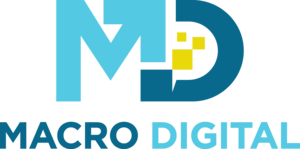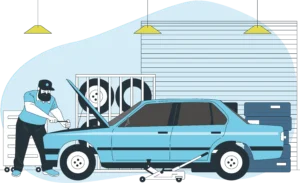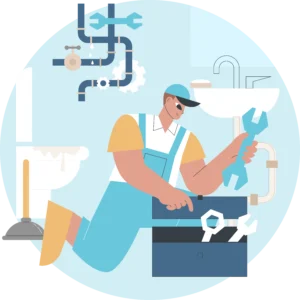Top 7 Email Marketing Tips for Moving Companies
In the moving business, timing and trust make all the difference.
And that’s exactly what email marketing for moving companies helps you build consistent communication that turns one-time customers into loyal fans.
Whether you’re promoting seasonal offers, sharing moving tips, or following up after a service, email gives movers a direct line to their customers.
It’s more personal than ads and more effective than social media when it comes to conversions.
Think of your inbox strategy as an extension of your brand’s customer service, one that nurtures relationships, drives bookings, and keeps your business top-of-mind before, during, and after the move.
In this guide, we’ll break down the 7 most effective email marketing tips for movers, from growing your list to automation and tracking what truly drives results.
1. Building a Quality Email List
Before you can send powerful moving company email campaigns, you need the right audience.
A strong, permission-based email list is the foundation of every successful email marketing strategy for movers and just like any effective lead generation strategy for franchise businesses, it starts with understanding your audience and offering genuine value.
Instead of buying lists (which often leads to low engagement and spam issues), focus on building your list organically through genuine customer interest.
How to Grow Your Email List
- Add signup forms to your website. Place them on your homepage, blog posts, and quote request pages. Offering something valuable in return a free “Moving Checklist” or “Packing Guide” works great.
- Use social media. Share helpful moving content with clear CTAs that link to your signup form.
- Incentivize signups. Offer exclusive discounts, promo codes, or priority booking for subscribers.
- Collect emails offline. Encourage customers to join your mailing list when booking moves in person or over the phone.
The goal isn’t just volume, it’s quality. You want engaged subscribers who are genuinely interested in your services.
Stay Compliant and Respect Privacy. Trust is everything in email marketing.
Always follow local email laws like CAN-SPAM (US) or CASL (Canada).
That means:
- Get clear consent before sending marketing emails.
- Include an easy “unsubscribe” option in every email.
- Use your real business name and address in the footer.
Regularly clean your list to remove inactive or invalid emails. A smaller but engaged audience will outperform a massive, unresponsive one every time.
2. Segmenting Your Audience
Not every customer on your list is in the same stage of their moving journey.
Some are comparing quotes, some are booking soon, and others have already moved.
That’s where email segmentation comes in. It helps you send the right message to the right people at the right time.
For moving companies, segmentation is the secret to higher open rates, better engagement, and more conversions.
Instead of blasting one generic email, you can send tailored messages that actually resonate.
Smart Ways to Segment Your Moving Company Email List
- Moving Timeline: Separate subscribers based on when they’re planning to move within a week, a month, or later.
- Service Type: Local, long-distance, commercial, or storage customize your message for each.
- Location: Tailor offers or updates to specific cities or neighborhoods you serve.
- Customer Status: Leads, booked customers, and past clients should each receive different communication.
- Behavior-Based: Track which emails people open or what pages they visit, then adjust future messages accordingly.
With most email marketing tools (like Mailchimp or ActiveCampaign), you can set up dynamic segments that automatically update based on activity meaning your targeting stays fresh without extra manual work.
Why Segmentation Works
Segmented campaigns deliver more relevant messages, which means fewer unsubscribes and more conversions.
For instance, a customer who just requested a quote might receive helpful tips about “How to Prepare for Moving Day,” while a past client could get a referral offer or seasonal discount.
Personalized, segmented messaging is what separates average email marketing for movers from high-performing, ROI-driven campaigns.
3. Crafting Engaging Email Content
Once you’ve built and segmented your list, it’s time to focus on what really matters content that converts.
Your subscribers don’t want another sales pitch sitting in their inbox. They want something useful, relevant, and timely.
That’s where great content strategy comes in.
A strong moving company email campaign should inform, engage, and guide customers through their moving journey from first quote to post-move follow-up.
Types of Emails That Work for Movers
1. Promotional Emails
Share exclusive offers, bundle deals, or seasonal discounts.
Example: “Book your spring move and get 10% off packing services.” Keep the tone friendly and the call-to-action (CTA) clear “Get My Quote” or “Claim Offer.”
2. Informational Emails
Educate your audience. Send short moving guides, packing tips, or reminders about what to do before moving day.
For example, “5 Packing Mistakes to Avoid Before Your Move.” This type of content positions you as a trusted, helpful resource not just another service provider.
3. Transactional Emails
These are triggered automatically when someone interacts with your business (e.g., quote requests, bookings, payment confirmations).
Keep them simple, clear, and branded. They’re often the most-opened emails you’ll send.
Tips for Writing Compelling Subject Lines
- Keep it short and clear under 50 characters if possible.
- Use curiosity or urgency: “Ready for moving day?” or “Your exclusive discount ends soon.”
- Personalize with a name or location: “Hey Sarah, ready for your Toronto move?”
- Test different versions, sometimes the simplest ones perform best.
Make Your Content Valuable
Each email should have a clear purpose. Ask yourself: What’s the one takeaway for the reader?
- Keep paragraphs short and easy to scan.
- Add visuals before/after photos, customer testimonials, or short videos.
- Always include one strong CTA, not multiple competing ones.
When you consistently send helpful, engaging emails, you’re not just selling moves, you’re building relationships that turn into referrals and repeat business.
4. Designing Visually Appealing Emails

Even the best message can fall flat if it doesn’t look good. Great design keeps readers engaged and makes your message easier to digest.
For email marketing for moving companies, a clean, branded layout can instantly boost credibility and response rates.
Think of your email as an extension of your brand. It should feel like your website: trustworthy, professional, and easy to navigate.
Why Design Matters
Your subscribers are busy. If your email looks cluttered or unprofessional, they’ll close it in seconds.
A simple, well-structured layout with clear hierarchy helps readers scan quickly and focus on what matters your offer or CTA.
Tips for Creating Eye-Catching Email Templates
- Keep it clean: Use plenty of white space and short sections. Avoid long text blocks.
- Be on-brand: Stick to your brand colors, fonts, and tone. Consistency builds recognition.
- Use high-quality visuals: Real images of your team, trucks, or happy customers go a long way in building trust.
- Add clear CTAs: Buttons like “Get a Free Quote” or “Book My Move” should stand out with contrasting colors and action-focused text.
- Structure your content: Use headers, subheaders, and short bullets so readers can skim easily.
Optimize for Mobile
More than half of emails are opened on phones.
If your design isn’t mobile-friendly, you’re losing potential leads.
Here’s how to keep it optimized:
- Use a single-column layout for easy scrolling.
- Choose large fonts and tappable buttons so it’s finger-friendly.
- Compress images to load fast on mobile data.
- Always test your emails across devices before sending.
Remember: a clean, branded, responsive design isn’t just about looks it builds trust and engagement, turning casual readers into loyal customers.
5. Personalization and Automation
If you’re sending the same email to everyone, you’re missing out.
Modern email marketing for moving companies thrives on personalization and smart automation, two ingredients that turn generic blasts into high-performing campaigns.
Customers want to feel seen. Personalizing your emails based on their moving needs, location, or stage in the journey builds stronger trust and dramatically boosts engagement.
Simple Ways to Personalize Your Emails
- Use names and locations. “Hey Alex, ready for your Vancouver move?” feels far more genuine than “Dear Customer.”
- Reference their actions. Follow up on a quote request, booking, or inquiry with relevant next steps.
- Tailor your content. A local move might get quick-packing tips, while a long-distance lead might receive storage or checklist suggestions.
- Celebrate milestones. Send thank-you emails after a completed move or offer a discount for referrals.
Personalization isn’t about fancy tech, it’s about relevance.
When your emails reflect what the customer actually needs, they stop scrolling and start engaging.
Automate to Save Time and Increase Conversions
Automation takes your strategy to the next level. Once you set it up, your campaigns run on autopilot nurturing leads, reminding customers, and bringing back inactive ones without manual effort.
Here are some automation sequences that work especially well for moving companies:
- Welcome Series: When someone subscribes, send a friendly welcome followed by a short sequence introducing your company, services, and moving tips.
- Quote Follow-Up: Automatically remind users who requested a quote but haven’t booked yet. Add social proof or limited-time offers.
- Post-Move Follow-Up: Thank customers for trusting your company, ask for feedback, and share referral or review links.
- Re-Engagement Campaign: Win back past clients or inactive subscribers with exclusive promotions or helpful moving guides.
When personalization and automation work together, your emails feel human even when they’re automated.
You’ll save time, nurture leads more effectively, and consistently turn subscribers into loyal customers.
6. Timing and Frequency of Emails
Even the best email won’t perform well if it lands at the wrong time.
Finding the right timing and frequency is key to keeping your audience engaged and not annoyed.
In the moving industry, timing matters more than most.
People plan moves weeks or months ahead, so sending the right message at the right moment can make all the difference.
When to Send Your Emails
There’s no one-size-fits-all rule, but data shows that certain times tend to work best:
- Mid-week (Tuesday to Thursday): Engagement rates are usually highest when inboxes aren’t overloaded.
- Mid-morning or early afternoon: Between 10 AM and 2 PM often works well, people have settled into their day and are more likely to check emails.
- Test and adjust: Use A/B testing to experiment with different send times for your audience. What works in Toronto might not be ideal for Calgary.
If you’re promoting seasonal deals, plan your campaigns strategically for example, start your “Summer Moving Sale” in late spring when people are already booking moves.
How Often to Email Your Audience
Too many emails, and subscribers will tune out.
Too few, and they’ll forget you exist. The goal is balance.
Here’s a simple approach:
- Leads and active customers: 1–2 emails per week (quotes, reminders, or educational content).
- General subscribers or past customers: 1–2 emails per month (newsletters, seasonal promos, or moving tips).
- Inactive users: Occasional re-engagement campaigns (once every few months).
If possible, let subscribers choose how often they want to hear from you. That flexibility builds trust and reduces unsubscribes.
Watch Your Metrics
Use your open rates, click-throughs, and unsubscribe trends as feedback. If engagement drops, your timing or frequency may need adjusting.
Consistent, well-timed communication keeps your brand top of mind so when it’s time for your subscribers to move again, your company is the first they think of.
7. Tracking and Analyzing Email Performance
The real power of email marketing for movers lies in the numbers.
Every open, click, and conversion tells you how well your campaigns are working and where you can improve.
Tracking your results consistently helps you understand what resonates with your audience and what doesn’t.
When combined with a strong local SEO strategy, your email marketing data can reveal where your highest-converting leads are coming from helping you refine campaigns, boost ROI, and turn good campaigns into great ones.
Key Metrics to Track
- Open Rate: Shows how effective your subject lines are. If it’s low, test new ones shorter, more personal, or curiosity-driven.
- Click-Through Rate (CTR): Measures how engaging your content and CTAs are. If CTR drops, your offer or design might need tweaking.
- Conversion Rate: The most important metric. It tracks how many subscribers actually book a move, fill out a form, or call your business.
- Bounce Rate: A high bounce rate often means your email list needs cleaning. Remove invalid or inactive emails regularly.
- Unsubscribe Rate: If too many people opt out, it’s a sign your content frequency or relevance needs adjusting.
Tools to Simplify Tracking
You don’t need a complex setup to measure performance. Start with:
- Email Platforms: Tools like Mailchimp, Constant Contact, or ActiveCampaign give built-in analytics for open and click rates.
- Google Analytics: Add UTM tags to track how email traffic performs on your website.
- A/B Testing: Experiment with different subject lines, visuals, and CTAs to learn what drives the most engagement.
Use Data to Optimize Future Campaigns
Your email analytics are more than numbers; they’re insights.
- Double down on what’s working (high-performing offers, topics, or send times).
- Tweak or drop what’s underperforming.
- Test one element at a time with small, consistent improvements compound over time.
Real-World Example
A moving company that ran a seasonal promotion tracked open rates and found emails with the subject line “Ready for your summer move?” performed 35% better than generic ones.
By applying this insight across future campaigns, they increased bookings by 20%.
Data-driven optimization doesn’t just improve one campaign it improves your entire marketing system.
Conclusion
Email marketing isn’t just another digital channel, it’s one of the most powerful tools moving companies can use to stay connected with customers, drive more bookings, and build lasting trust.
From growing a quality list and segmenting your audience to crafting engaging content and automating campaigns, every step helps you stay ahead of competitors who rely only on ads or word-of-mouth.
The best part? You don’t need a huge budget, just a consistent strategy, a little creativity, and the right tools.
Start small:
- Build your list with real leads.
- Send valuable content, not just promotions.
- Automate follow-ups and track performance.
As you refine your approach, you’ll notice higher engagement, more repeat customers, and stronger brand loyalty all through the power of well-executed email marketing for movers.
So, start today. Your next big move might just begin with a single email.
FAQs: Email Marketing for Moving Companies
What’s the best type of email campaign for moving companies?
The most effective campaigns mix promotional, informational, and follow-up emails.
For example, use promotions to drive bookings, moving tips to build trust, and post-move follow-ups to request reviews or referrals.
Combining these three keeps your audience engaged at every stage of the moving journey.
How often should a moving company send marketing emails?
It depends on your audience and goals, but most movers see great results sending 1–2 emails per week to active leads and 1–2 per month to past customers.
The key is consistency: stay in touch often enough to stay top-of-mind, but not so often that you overwhelm subscribers.
What’s the best email marketing tool for movers?
Popular tools like Mailchimp, ActiveCampaign, and Constant Contact work great for moving companies.
They allow you to design branded templates, automate sequences, and track key metrics like open rates and bookings all without advanced technical skills.
How can movers personalize their email marketing?
Personalization goes beyond using a name. You can tailor emails by location, move type, or stage in the booking process.
For example, send long-distance clients packing tips, local movers discount reminders, and past customers referral offers.
Personalized messages always perform better because they feel relevant and helpful.




